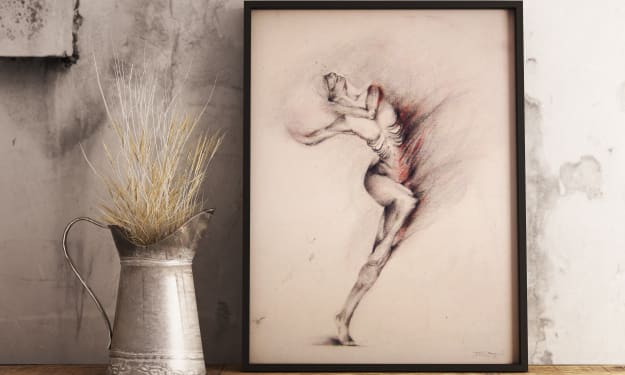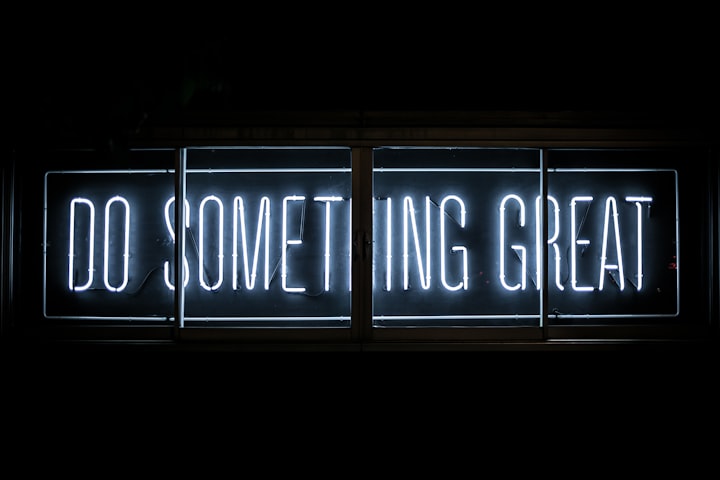Beginning with Digital Art
The General Information
Get inspired by what various artists do by watching their techniques and delving into their digital art process on YouTube, but do not, I repeat, do not try to automatically put your level of expertise to theirs. This was a valuable lesson I had to learn when first getting into digital art. I placed my pedestal too high and expected too much from myself. While I’ve worked with watercolors, oil paints, different pastels and pencils, naturally, I assumed that digital painting was the next step to easy. I already knew so many things. That’s not how it goes. Digital art, like the other forms of art work, is its own setting and might be, in fact, one of the hardest things I ever tried.
Digital art is more confined when first starting out. You have to figure out the controls on your settings, the brushes, the swatches, the program you’re using, etc. Just use a physical canvas for crying out loud. But on a serious note, digital art does provide variety in creativity and uniqueness. It also allows more people to view your artwork quicker and easier than taking a picture of your painting. Here is a list of things to help you out with starting your digital art journey.
Program
Before you buy anything, you want to make sure you have a certain program in mind that you’re going to be working with. This could mean Photoshop, Illustrator, SAI, or something a lot simpler like the painting program already installed on your computer. If you are going for the real deal though, Photoshop, Illustrator, or SAI are best. They offer space, equipment, and direction. When obtained, make sure you have a general understanding of the outs and ins of your program.
Drawing Tablet
We’re not talking about paper here. Drawing tablets are accompanied with a drawing pen. Together, like a piece of paper, you draw on it while a USB cord is hooked from the tablet itself to your computer. Anything you draw on your tablet transfers to your computer. Most of these tablets do not have digital screens. Digital screens are the more expensive; save your college money, prices.
Since most tablets don’t have a digital screen, you must guide your hand on the tablet while watching your computer screen to see how your drawing is turning out. It is quite hard the first time around, as your eyes and hands aren't used to this type of cooperation pertaining to making art, if you’re used to physically painting.
When searching for a drawing pad your first time, you want to find something not too extravagant. For instance, I hold in my possession a Huion model H610PRO. Though I think it is generous to beginners, it does have its advances that might make beginners confused. Especially some of its hands-on controls that are focused on zooming in, switching between eraser and pen, and even using it to copy something on your screen. I would say go with a lesser model Huion or the famous Wacom tablets. Wacom does provide art tablets that specifically apply to beginners.
Tools
You need to do your research on how to use the tools provided in your program or the tools that you can download from other artists. This is something I cannot directly guide you in as every program has a different way of using their tools. The tools are the main components you will be using to create your artwork. These vary from brushes, pencil tools, pen tools, shapes, magic selection, etc.
Sizes
If you’re not familiar with how sizes look on computers in programs, then you need to be. Before you even start a piece, you must know what size it is going to be, how many pixels (dimensions), and how much quality this creation will be available in. These are also aspects you must get used to with the program of your choice. You don’t want to create this amazing piece of digital art just for it to turn out too small when saving.
Brush & Eraser
Whatever program you are using, the brush and eraser are going to be your best friends. You will be using these two back and forth which means your hand-eye coordination between screen, tools, and drawing tablet has to become good and precise. You need to familiarize yourself with each of these so that your hand becomes comfortable when working on pieces.
Zooming
Don’t zoom into your drawing when you’re first creating. It will give you a false sense of accomplishment. Start out far away or however big the blank layer fits on your screen. Only zoom in your work when you need to add details and finalize the piece.
Layering
Layering applies to most of these painting programs. Layers help with adding dimensions or working on a background or character without screwing with the entire piece. You can use layering for so many aspects, but this is also something you must familiarize yourself with depending on your program.
Since you are just starting and want to get a general idea of what to do or use when beginning this digital art journey, I won’t get into deep specifics about any of these. This post is to show you what you need to prepare for prior to your digging in. And remember, researching is the best searching.
About the Creator
Danyel Poindexter
I am a freelance writer and artist who focuses on writing about artwork, gaming, books, performances, and other entertaining subjects.






Comments
There are no comments for this story
Be the first to respond and start the conversation.